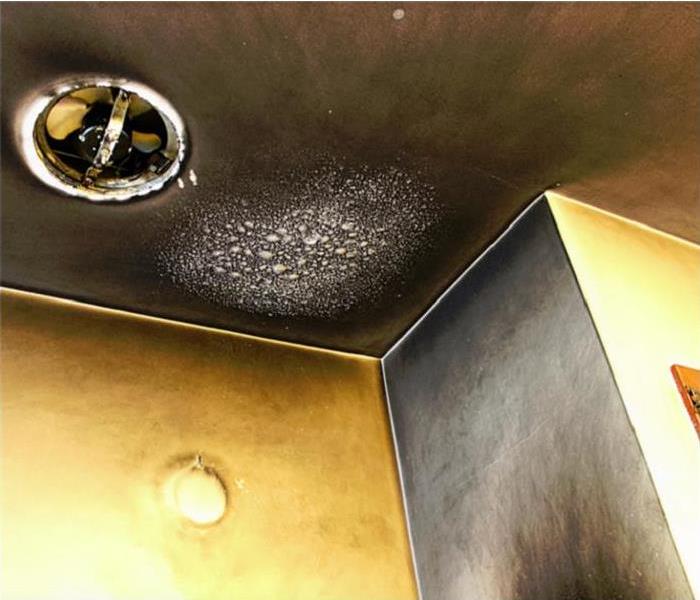Typical Treatments for Walls and Ceilings with Smoke Damage in St. Petersburg
6/10/2021 (Permalink)
 Don't DIY your smoke and soot damage. Call SERVPRO. We are trained and equipped to restore your home.
Don't DIY your smoke and soot damage. Call SERVPRO. We are trained and equipped to restore your home.
SERVPRO Techniques Mitigate Fire & Smoke Damage
Most fires damage walls and ceilings primarily through the smoke and its residues. As such, cleaning these surfaces is complicated by the many changes and variations of smoke present in the aftermath of fire damage. SERVPRO uses various approaches to clean and remove smoke from walls and ceilings, including specialized brushes, cleaning agents, and techniques designed specifically for niche scenarios. Here's an overview of the cleaning methods you are most likely to see our crews using during restorations.
Dry Sponge Cleaning
Dry sponges get regularly used in the field as they apply to a wide variety of St. Petersburg fire damage scenarios. Dry Cleaning Sponges are used when damage is relatively light or a precursor to more heavy-duty cleaning methods. These can pick up scattered dust, ash, debris, and other factors which can inhibit and slow down wet cleaning processes. In lighter cases of fire damage, these may be all we need to clean your walls and ceilings adequately. In upholstery and soft fabrics being covered with dry smoke (powder), vacuuming is the first action taken.
Wet Sponge Cleaning
Wet sponge cleaning is not merely a variation of its dry counterpart: this process requires different sponges, specialty cleaning agents, and much more careful application. In return, cleaning is much deeper and leaves behind less residue. However, this type of cleaning is limited by the material composing the wall or ceiling. Typically, we only apply wet sponge treatments to paint, metal, or wood ceilings and walls. Surfaces are always pre-tested to ensure no secondary damage will result from the fire damage cleanup.
Peroxide Active Cleaning
Some types of ceilings cannot be cleaned with water-based liquids or may otherwise have damaging elements such as tar that make wet sponge treatments improper. For these, SERVPRO uses peroxide active cleaning regiments, a type of cleaning based on the application of hydrogen peroxide. These treatments are not different from wet sponge treatments, but they rely on a very different chemical process. Quite often, by successfully cleaning surfaces of most of the residue of smoke and soot, our IICRC certified technicians can limit these materials' replacement and rely upon odor suppressing primers and then a newly finished coat of paint. We always strive to restore, not replace.
SERVPRO of NE St. Petersburg is a locally owned franchise with national resources dedicated to mitigating and restoring local homes taking damage from fire, water, and mold damage. Call us around the clock at (727) 522-0000.






 24/7 Emergency Service
24/7 Emergency Service